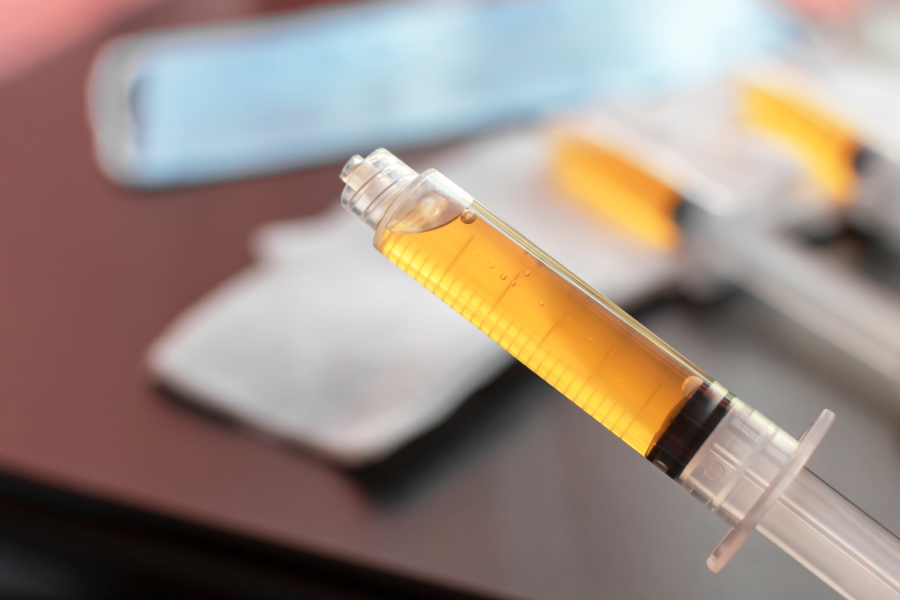Every day, countless individuals strive to find relief from chronic ailments and inflammatory conditions. This pursuit often leads them to a common prescription — corticosteroids. Corticosteroids, or simply “steroids,” are powerful drugs widely used in medicine to help reduce bodily inflammation.
Corticosteroids mimic hormones your body naturally produces in your adrenal glands, and they work by decreasing inflammation and reducing the activity of the immune system. In many cases, they’re the key to reducing swelling, redness, itching, and allergic reactions, acting as a swift balm to various ailments. While corticosteroids offer relief, it’s crucial to understand their function, potential side effects, and how they impact the human body over time.
In this exploration of corticosteroids and their side effects, we’re equipping you with the knowledge you need to make informed decisions about your health and to introduce a potentially safer and more natural alternative solution: Platelet-Rich Plasma (PRP) therapy. Stay with us as we review corticosteroids and reveal an innovative way to encourage your body’s innate healing capabilities.
The Types and Targets of Corticosteroids
Corticosteroids are derived from cortisol, a hormone naturally produced by the adrenal glands. In medical science, corticosteroids are synthetically produced to mirror these natural hormones. When we speak of “corticosteroids,” we’re referring to this class of drugs designed to emulate and boost our body’s anti-inflammatory actions.
There are many types of corticosteroids, and each has been formulated to serve a specific purpose, enabling targeted therapy to match each patient’s needs. They come in many forms, such as tablets, inhalers, creams, injections, and eye drops, making their application as diverse as the conditions they treat.
But how do corticosteroids treat Lower Back Pain and other conditions?
The mechanism is quite clever. Once in the body, these drugs target and bind to receptor proteins inside our cells. This coupling sets off a chain reaction, modifying the DNA transcription process and decreasing the production of inflammatory substances in the body.
Corticoids are designed to find and quell the inflammation in your lungs, skin, joints, or elsewhere. However, it’s essential to remember that while they fight inflammation, corticosteroids suppress your immune response, which can lead to several side effects, especially with prolonged use.
Unveiling Potential Side-Effects of Corticosteroids
The potency of corticosteroids makes them a versatile and effective choice for many medical conditions. However, their broad range of influence within the body also opens the door to many side effects. This balance of benefits and risks is critical when choosing your healthcare path.
Corticosteroid side effects can range from mild to severe, and they often depend on the dosage, the duration of treatment, and the way the medication is administered. They can impact multiple body systems, leading to a spectrum of effects that can disrupt normal function.
For instance, corticosteroids can affect your metabolic processes, leading to weight gain, increased appetite, fluid retention, and elevated blood sugar levels. They can also cause mood changes, insomnia, and even psychiatric disorders such as depression or mania in severe cases.
Long-term use of corticosteroids can lead to more serious complications. They can weaken your immune system, making you more susceptible to infections. They can also impact your bone health, lead to osteoporosis and increase your risk of fractures. Eye problems such as glaucoma and cataracts are another potential issue with prolonged corticosteroid use.
Hidden Costs of Long-Term Corticosteroid Use
Prolonged use of corticosteroids can yield severe and detrimental health consequences. It’s a concern we cannot overlook, especially when corticosteroids are presented as a long-term solution for chronic conditions.
The decision to take corticosteroids should never be made lightly but with a full understanding of the potential long-term implications. So what happens with long-term use of corticosteroids?
Several scientific studies underscore the gravity of prolonged corticosteroid use. One of the most distressing findings is the adverse impact on the body’s natural hormone production. In its intricate balance, the human body reduces its production of crucial hormones when introducing corticosteroids. Over time, this can lead to adrenal insufficiency, a condition in which the body cannot produce sufficient amounts of certain hormones. This can result in fatigue, nausea, and many other long-term health complications.
The long-term use of corticosteroids also has harmful effects on bone health. It increases the risk of osteoporosis, a condition characterized by weak and brittle bones. Research indicates that long-term corticosteroid users have up to a two-fold increase in fracture risk, a sobering statistic that emphasizes the need for alternatives.
The implications of prolonged corticosteroid use also extend to other systems within the body. They can lead to glaucoma, cataracts, and even blindness in severe cases. They also increase the risk of infections due to their immunosuppressive effects.
A Safer Treatment for Lower Back Pain: Platelet-Rich Plasma Therapy

Now that we’ve examined the pitfalls of corticosteroid use, long-term and otherwise, let’s look at a groundbreaking, safer alternative: Platelet-Rich Plasma (PRP) therapy. PRP, unlike corticosteroids, harnesses the body’s innate healing capabilities, offering a more natural approach to managing chronic conditions.
PRP therapy is an innovative treatment that utilizes a patient’s blood, specifically the platelets. Rich in growth factors and proteins, these platelets promote healing and tissue regeneration when precisely injected into injured or diseased areas. This contrasts with corticosteroids, which can suppress the body’s natural responses and lead to systemic side effects.
At Northwest Regen, we specialize in tailoring PRP treatments to our patient’s unique needs. We understand that each individual’s body is different, requiring personalized care. Our in-house lab allows us to customize PRP preparations, ensuring an optimal concentration of platelets targeted to promote the best possible healing outcome for you.
In terms of safety and efficacy, PRP therapy offers an excellent profile. The primary risk involves localized reactions at the injection site, such as transient pain and swelling — dramatically lower than the systemic side effects associated with corticosteroids. Furthermore, research indicates that PRP can effectively manage various conditions, from osteoarthritis and tendon injuries to hair loss.
Northwest Regen: Your PRP Partner
The potential side effects and long-term implications of corticosteroids should motivate us to seek safer, more effective treatment alternatives. With its natural, patient-specific approach, PRP offers an exciting and promising alternative. Northwest Regen is committed to delivering tailored, high-quality PRP treatments to those seeking a different approach to their chronic conditions.
Ready to take the next step toward healing and recovery? Contact us today to learn more about Northwest Regen’s PRP treatment options and start your journey toward a healthier, corticosteroid-free life.

Dr. Ryan Wood is a licensed Naturopathic and Chiropractic physician focusing on interventional orthopedic and orthobiologic medicine and injection therapies as well as general musculoskeletal and non-surgical orthopedic medicine.
With almost two decades of orthopedic practice across multiple disciplines, he has the necessary experience to ensure proper diagnoses and management of complex cases.


